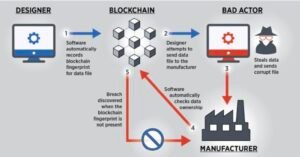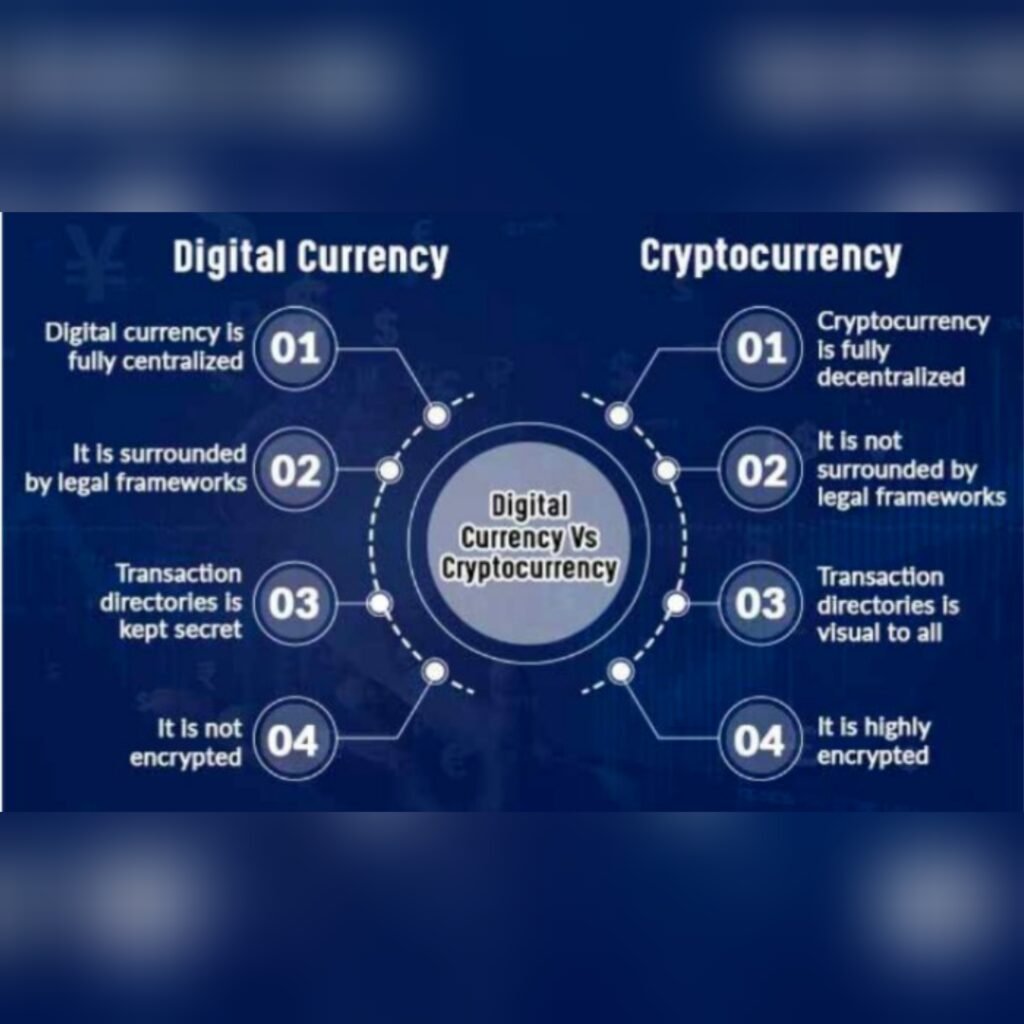ब्लॉकचेन कैसे काम करता है?
हालाँकि ब्लॉकचेन के अंतर्निहित तंत्र जटिल हैं, फिर भी हम निम्नलिखित चरणों में एक संक्षिप्त अवलोकन देते हैं। ब्लॉकचेन सॉफ़्टवेयर इनमें से अधिकांश चरणों को स्वचालित कर सकता है:
चरण 1 – लेनदेन रिकॉर्ड करें।
ब्लॉकचेन लेनदेन ब्लॉकचेन नेटवर्क में एक पक्ष से दूसरे पक्ष तक भौतिक या डिजिटल परिसंपत्तियों की आवाजाही को दर्शाता है। इसे डेटा ब्लॉक के रूप में रिकॉर्ड किया जाता है और इसमें निम्नलिखित विवरण शामिल हो सकते हैं:
इस लेन-देन में कौन शामिल था?
लेन-देन के दौरान क्या हुआ?
लेन-देन कब हुआ?
लेन-देन कहां हुआ?
यह लेन-देन क्यों हुआ?
कितनी परिसंपत्ति का आदान-प्रदान किया गया?
लेन-देन के दौरान कितनी पूर्व शर्तें पूरी की गईं?
चरण 2 – आम सहमति प्राप्त करें।
वितरित ब्लॉकचेन नेटवर्क पर अधिकांश प्रतिभागियों को इस बात पर सहमत होना चाहिए कि रिकॉर्ड किया गया लेनदेन वैध है। नेटवर्क के प्रकार के आधार पर, समझौते के नियम अलग-अलग हो सकते हैं लेकिन आमतौर पर नेटवर्क की शुरुआत में ही स्थापित किए जाते हैं।
चरण 3 – ब्लॉकों को लिंक करें।
एक बार जब प्रतिभागी सहमति पर पहुँच जाते हैं, तो ब्लॉकचेन पर लेन-देन को एक खाता बही के पन्नों के बराबर ब्लॉक में लिखा जाता है। लेन-देन के साथ, एक क्रिप्टोग्राफ़िक हैश भी नए ब्लॉक में जोड़ा जाता है। हैश एक श्रृंखला के रूप में कार्य करता है जो ब्लॉक को एक साथ जोड़ता है। यदि ब्लॉक की सामग्री को जानबूझकर या अनजाने में संशोधित किया जाता है, तो हैश मान बदल जाता है, जिससे डेटा से छेड़छाड़ का पता लगाने का एक तरीका मिलता है।
इस प्रकार, ब्लॉक और चेन सुरक्षित रूप से जुड़ते हैं, और आप उन्हें संपादित नहीं कर सकते। प्रत्येक अतिरिक्त ब्लॉक पिछले ब्लॉक और इसलिए पूरे ब्लॉकचेन के सत्यापन को मजबूत करता है। यह टावर बनाने के लिए लकड़ी के ब्लॉक को ढेर करने जैसा है। आप केवल ब्लॉक को ऊपर रख सकते हैं, और यदि आप टावर के बीच से एक ब्लॉक हटाते हैं, तो पूरा टावर टूट जाता है।
चरण 4 – खाता साझा करें।
यह प्रणाली सभी प्रतिभागियों को केंद्रीय खाता बही की नवीनतम प्रति वितरित करती है।
ब्लॉकचेन नेटवर्क के प्रकार क्या हैं?
ब्लॉकचेन में विकेन्द्रीकृत या वितरित नेटवर्क के चार मुख्य प्रकार हैं:
1–सार्वजनिक ब्लॉकचेन नेटवर्क।
सार्वजनिक ब्लॉकचेन बिना अनुमति के होते हैं और सभी को उनसे जुड़ने की अनुमति देते हैं। ब्लॉकचेन के सभी सदस्यों को ब्लॉकचेन को पढ़ने, संपादित करने और मान्य करने का समान अधिकार है। लोग मुख्य रूप से बिटकॉइन, एथेरियम और लिटकोइन जैसी क्रिप्टोकरेंसी का आदान-प्रदान और खनन करने के लिए सार्वजनिक ब्लॉकचेन का उपयोग करते हैं।
2–निजी ब्लॉकचेन नेटवर्क।
एक ही संगठन निजी ब्लॉकचेन को नियंत्रित करता है, जिसे प्रबंधित ब्लॉकचेन भी कहा जाता है। प्राधिकरण यह निर्धारित करता है कि कौन सदस्य हो सकता है और नेटवर्क में उनके पास क्या अधिकार हैं। निजी ब्लॉकचेन केवल आंशिक रूप से विकेंद्रीकृत होते हैं क्योंकि उन पर पहुँच प्रतिबंध होते हैं। व्यवसायों के लिए एक डिजिटल मुद्रा विनिमय नेटवर्क, रिपल, एक निजी ब्लॉकचेन का एक उदाहरण है।
3–हाइब्रिड ब्लॉकचेन नेटवर्क।
हाइब्रिड ब्लॉकचेन निजी और सार्वजनिक दोनों नेटवर्क के तत्वों को मिलाते हैं। कंपनियाँ सार्वजनिक प्रणाली के साथ-साथ निजी, अनुमति-आधारित सिस्टम स्थापित कर सकती हैं। इस तरह, वे ब्लॉकचेन में संग्रहीत विशिष्ट डेटा तक पहुँच को नियंत्रित करते हैं जबकि बाकी डेटा को सार्वजनिक रखते हैं। वे सार्वजनिक सदस्यों को यह जाँचने की अनुमति देने के लिए स्मार्ट अनुबंधों का उपयोग करते हैं कि क्या निजी लेनदेन पूरा हो गया है। उदाहरण के लिए, हाइब्रिड ब्लॉकचेन बैंक के स्वामित्व वाली मुद्रा को निजी रखते हुए डिजिटल मुद्रा तक सार्वजनिक पहुँच प्रदान कर सकते हैं।
4— कंसोर्टियम ब्लॉकचेन नेटवर्क।
संगठनों का एक समूह कंसोर्टियम ब्लॉकचेन नेटवर्क को नियंत्रित करता है। पूर्व-चयनित संगठन ब्लॉकचेन को बनाए रखने और डेटा एक्सेस अधिकारों को निर्धारित करने की जिम्मेदारी साझा करते हैं। ऐसे उद्योग जिनमें कई संगठनों के समान लक्ष्य होते हैं और साझा जिम्मेदारी से लाभ होता है, वे अक्सर कंसोर्टियम ब्लॉकचेन नेटवर्क को प्राथमिकता देते हैं। उदाहरण के लिए, ग्लोबल शिपिंग बिजनेस नेटवर्क कंसोर्टियम एक गैर-लाभकारी ब्लॉकचेन कंसोर्टियम है जिसका उद्देश्य शिपिंग उद्योग को डिजिटल बनाना और समुद्री उद्योग संचालकों के बीच सहयोग बढ़ाना है।
ब्लॉकचेन प्रोटोकॉल क्या हैं?
ब्लॉकचेन प्रोटोकॉल शब्द का तात्पर्य विभिन्न प्रकार के ब्लॉकचेन प्लेटफ़ॉर्म से है जो एप्लिकेशन डेवलपमेंट के लिए उपलब्ध हैं। प्रत्येक ब्लॉकचेन प्रोटोकॉल विशिष्ट उद्योगों या अनुप्रयोगों के अनुरूप बुनियादी ब्लॉकचेन सिद्धांतों को अपनाता है। ब्लॉकचेन प्रोटोकॉल के कुछ उदाहरण निम्नलिखित उपखंडों में दिए गए हैं:
Definition of Cryptocurrency?
 Cryptocurrency is a digital or virtual form of currency that uses cryptography for secure financial transactions, control the creation of additional units, and verify the transfer of assets. Unlike traditional currencies issued by governments, cryptocurrencies are decentralized and operate on a technology called blockchain.
Cryptocurrency is a digital or virtual form of currency that uses cryptography for secure financial transactions, control the creation of additional units, and verify the transfer of assets. Unlike traditional currencies issued by governments, cryptocurrencies are decentralized and operate on a technology called blockchain.
Blockchain technology is a distributed ledger that records all transactions across a network of computers. This decentralized nature ensures transparency, security, and immutability of transactions. Cryptocurrencies use cryptographic algorithms to secure and verify transactions, making them resistant to fraud and counterfeiting.
One of the most well-known cryptocurrencies is Bitcoin, which was created in 2009 by an anonymous person or group of people using the pseudonym Satoshi Nakamoto. Bitcoin paved the way for the development of thousands of other cryptocurrencies, each with its own unique features and purposes.
Cryptocurrencies can be used for various purposes, such as online purchases, investments, and remittances. They offer benefits such as faster and cheaper transactions compared to traditional banking systems. Additionally, cryptocurrencies provide financial inclusion to the unbanked population, as they can be accessed using a smartphone and an internet connection.
However, it is important to note that cryptocurrencies are highly volatile and speculative in nature. Their value can fluctuate dramatically within a short period of time. Therefore, it is advisable to exercise caution and do thorough research before investing in or using cryptocurrencies.
In conclusion, cryptocurrencies are digital currencies that use cryptography and blockchain technology for secure and decentralized transactions. They have the potential to revolutionize the financial industry, but it is essential to understand the risks and benefits associated with them.
The Future of Cryptocurrency in India
India has witnessed a surge in cryptocurrency adoption in recent years, with an increasing number of people embracing digital currencies as an alternative investment option. While the government’s stance on cryptocurrencies has been a topic of debate, it is undeniable that the future of cryptocurrency in India holds immense potential.
One of the key factors driving the growth of cryptocurrency in India is the increasing digital literacy among its population. With the widespread use of smartphones and internet connectivity, more and more Indians are gaining access to information about cryptocurrencies and their benefits.
Another driving force behind the future of cryptocurrency in India is the growing need for financial inclusion. Traditional banking systems have limitations, especially in remote areas where access to banking services is limited. Cryptocurrencies offer a decentralized and secure way of conducting financial transactions, making them an attractive option for the unbanked population.
Furthermore, the Indian government has been exploring the potential of blockchain technology, which underlies cryptocurrencies. Blockchain has the potential to revolutionize various sectors, including finance, supply chain management, healthcare, and more. With the right regulations in place, cryptocurrencies can play a significant role in India’s digital transformation.
However, it is important to note that the future of cryptocurrency in India also faces challenges. Regulatory uncertainty, security concerns, and potential misuse of cryptocurrencies for illegal activities are some of the factors that need to be addressed. The Indian government has been taking steps to regulate cryptocurrencies and protect investors, striking a balance between innovation and security.
In conclusion, the future of cryptocurrency in India holds promise. As digital literacy and financial inclusion continue to improve, cryptocurrencies can provide a viable alternative for individuals and businesses alike. With proper regulations and a supportive ecosystem, India has the potential to become a significant player in the global cryptocurrency market.

